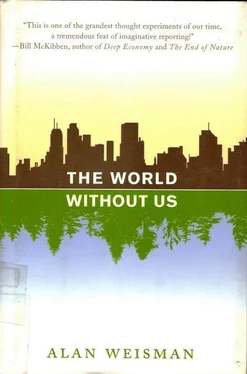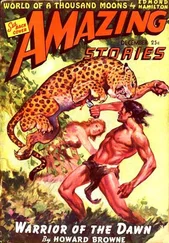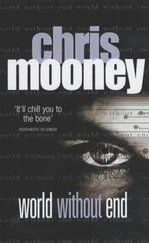Similarly, he orchestrated the sounds. Although he was a painter, he sensed that music had a better chance than images to reach, and maybe even enchant, the alien mind. Partly, because rhythm is manifest throughout physics, but also because for him, “other than nature, it’s the most reliable way to get into touch with what we call spirit.”

Diagram of male and female, drawn by Jon Lomberg for the Voyager Spacecraft Golden Record.
ARTWORK BY JON LOMBERG/© 2000.
The disk contains 26 selections, including music of pygmies, Navajos, Azerbaijani bagpipes, mariachis, Chuck Berry, Bach, and Louis Armstrong. Lomberg’s most cherished nominee was the Queen of the Night’s aria from Mozart’s The Magic Flute . In it, soprano Edda Moser, backed by the Bavarian State Opera Orchestra, displays the upper limit of the human voice, hitting the loftiest note in the standard operatic repertoire, a high F. Lomberg and the record’s producer, former Rolling Stone editor Timothy Ferris, insisted to Sagan and Frank Drake that it be included.
They quoted Kierkegaard, who had once written: “Mozart enters that small, immortal band whose names, whose works, time will not forget, for they are remembered in eternity.”
With Voyager , they felt honored to make that truer than ever.
The two Voyagers were launched in 1977. Both passed Jupiter in 1979 and reached Saturn two years later. After its sensational discovery of active volcanoes on Jupiter’s moon Io, Voyager 1 dipped below Saturn’s south pole for our first glimpse of its moon Titan, which flipped it out of the solar system’s elliptical plane and off toward interstellar space, actually passing Pioneer 10 . It is now farther from Earth than any other human-made object. Voyager 2 took advantage of a rare planetary alignment to visit Uranus and Neptune, and now is also leaving the sun behind.
Lomberg watched the first Voyager launch, with the record’s gilded sleeve bearing his diagrams of its birthplace and what to do with the disk inside—glyphs that he, Sagan, and Drake hoped that any space-navigating intelligence would be able to decipher, though there was little chance it would ever be found, and even less that we would ever know about it. Yet neither the Voyagers nor their recordings are the first manmade entities to travel beyond our planetary neighborhoods. Even after billions of years of relentless space-dust abrasion wears them to dust themselves, there is yet another chance for us to be known beyond our world.

DURING THE 1890s, a Serbian immigrant to America, Nikola Tesla, and an Italian, Guglielmo Marconi, each patented devices capable of sending wireless signals. In 1897, Tesla demonstrated sending ship-to-shore pulses across bodies of water in New York, even as Marconi was doing the same among various British isles—and, in 1901, across the Atlantic. Eventually they sued each other over the claim, and the royalties, to the invention of radio. No matter who was right, by then transmission across seas and continents was routine.
And beyond: Electromagnetic radio waves—waves much longer than poisonous gamma radiation or ultraviolet sunlight—emanate at the speed of light in an expanding sphere. As they move outward, their intensity drops by a factor of one over the distance squared, meaning that at 100 million miles from Earth, the signal strength is one-fourth what it was at 50 million miles. Nevertheless, it is still there. As the sphere of a transmission’s surface expands through the Milky Way, galactic dust absorbs some of the radio radiation, attenuating the signal further. Still, it keeps going.
In 1974, Frank Drake beamed a three-minute radio greeting from the largest radio dish on Earth, the 1,000-foot, half-million-watt Arecibo Radio Telescope in Puerto Rico. The message consisted of a series of binary pulses that an extraterrestrial mathematician might recognize as representing a crude graphical arrangement, depicting the sequence 1 through 10, the hydrogen atom, DNA, our solar system, and a human-shaped stick figure.
The signal, Drake later explained, was about a million times stronger than a typical TV transmission, and was aimed at a star cluster in the constellation Hercules, where it wouldn’t arrive for 22,800 years. Even so, due to the subsequent outcry over possibly having revealed Earth’s whereabouts to superior, predatory alien intelligences, members of the international community of radio astronomers agreed to never unilaterally expose the planet to such a risk again. In 2002, that accord was ignored by Canadian scientists who directed lasers heavenward. But as Drake’s broadcast has yet to elicit a response, let alone an attack, the chance that anything might cross their tight beams can’t be meaningfully computed.
Besides, the cat may long be out of the bag. For more than a half-century, we’ve been sending signals that by now would take a very large or very sensitive receiver to collect—yet, considering the size of the intellect that we imagine might be out there, it’s not impossible.
In 1955, a little more than four years after leaving a TV studio in Hollywood, signals bearing the first sound and images of the I Love Lucy show passed Proxima Centauri, the nearest star to our sun. A half-century later, a scene with Lucy disguised as a clown sneaking into Ricky’s Tropicana Night Club was 50-plus light-years, or about 300 trillion miles, away. Since the Milky Way is 100,000 light-years across and 1,000 light-years thick, and our solar system is near the middle of the galactic plane, this means in about AD 2450 the expanding sphere of radio waves bearing Lucy, Ricky, and their neighbors the Mertzes will emerge from the top and bottom of our galaxy and enter intergalactic space.
Before them will lie billions of other galaxies, over distances we can quantify but can’t really comprehend. By the time I Love Lucy reaches them, it’s unclear how anything out there would be able to make much sense of it, either. Distant galaxies, from our perspective, are moving away from each other, and the farther away they are, the faster they move—an astronomical quirk that appears to define the very fabric of space itself. The farther radio waves go, the weaker they become, and the longer they appear. Out at the universe’s edge, 10 billion-plus light-years away from now, light from our galaxy seen by some superintelligent race would appear shifted to the red end of the spectrum, where the longest wavelengths lie.
Massive galaxies in their path would further distort radio waves bearing the news that in 1953, a baby boy was born to Lucille Ball and Desi Arnaz. It would also increasingly compete with the background noise from the Big Bang, the original birth cry of the universe, which a consensus of scientists dates to at least 13.7 billion years ago. Just like Lucy’s broadcast shenanigans, that sound has been expanding at the speed of light ever since, and thus pervades everything. At some point, radio signals become even weaker than that cosmic background static.
But however fragmented, Lucy would be there, even fortified by the far more robust ultrahigh-frequency broadcasts of her reruns. And Marconi and Tesla, the most gossamer of electronic ghosts by now, would have preceded her, and Frank Drake after them. Radio waves, like light, keep expanding. To the limits of our universe and our knowledge, they are immortal, and broadcast images of our world and our times and memory are there with them.
As the Voyagers and Pioneers erode away to Stardust, in the end our radio waves, bearing sounds and images that record barely more than a single century of human existence, will be all the universe holds of us. It’s hardly an instant, even in human terms, but a remarkably fruitful—if convulsive—one. Whoever awaits our news at the edge of time will get an earful. They may not understand Lucy , but they will hear us laugh.
Читать дальше













